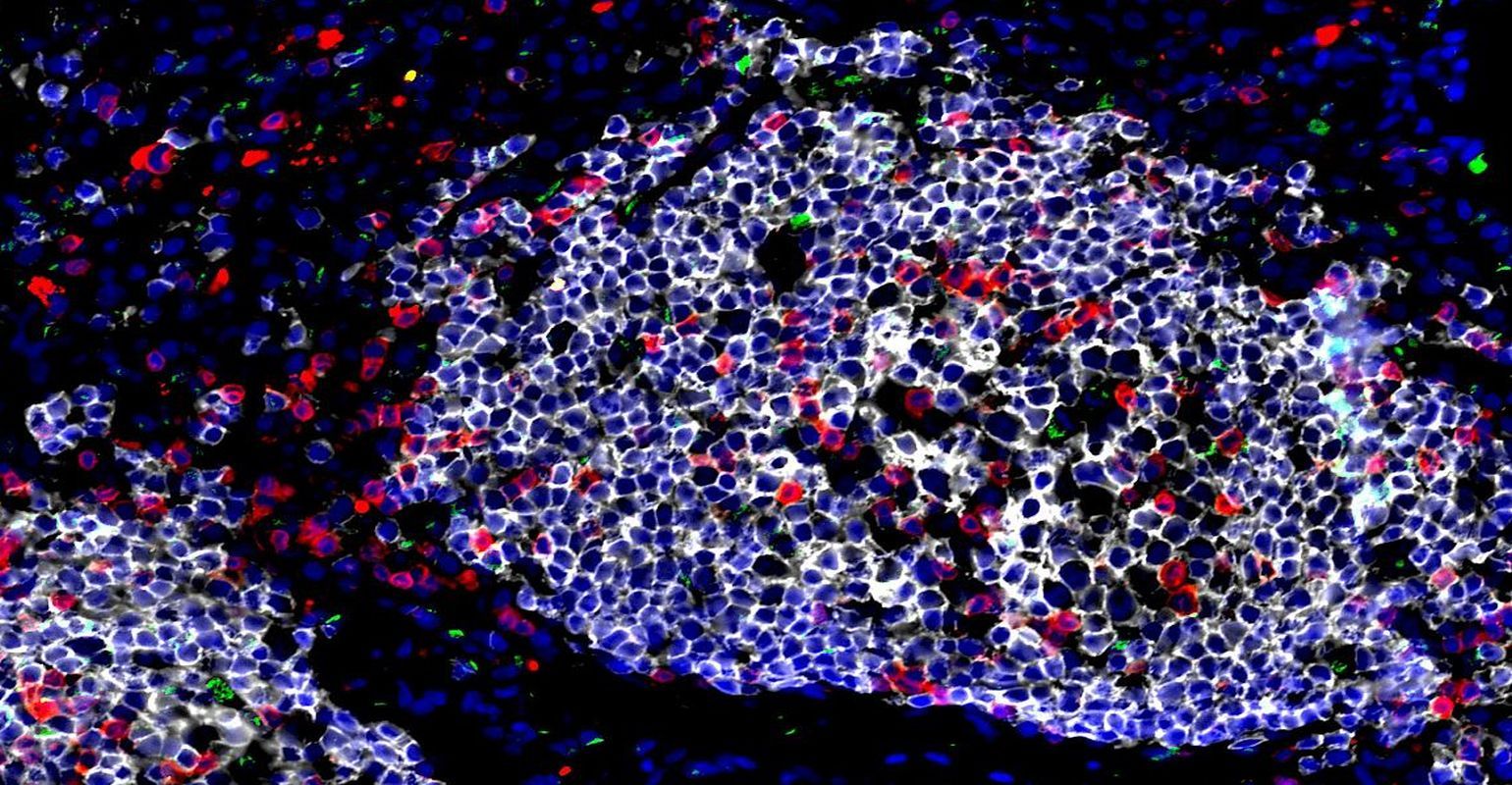Immune Cells Play Unexpected Role in Early Tuberculosis Infection

A class of immune cells called innate lymphoid cells (ILCs) mediates the body’s initial defense against tuberculosis (TB), according to a report published online today in Nature. Boosting this response may provide a new approach to developing treatments and vaccines against TB, which causes more deaths worldwide than any other single infectious disease. The research was supported in part by the National Institute of Allergy and Infectious Diseases (NIAID), a component of the National Institutes of Health. It was conducted by scientists at Washington University School of Medicine in St. Louis in collaboration with scientists at the Africa Health Research Institute in KwaZulu-Natal, South Africa, and other institutions.
Identified only in the past decade, ILCs can initiate quick, nonspecific responses against pathogens and also mount protective immune responses directed against specific pathogens. In this study, researchers observed that among people who were infected with Mycobacterium tuberculosis (Mtb), the bacterium that causes TB, a subset of ILCs moved from the blood to the lungs, where TB infections frequently take hold.
Investigators also tracked the activity of ILCs in several animal models. In mice with intact immune systems, ILCs homed to infected lung tissue and used messenger molecules to recruit the scavenger cells of the immune system, macrophages (link is external), to form protective granulomas, or small areas of inflammation, to suppress the infection. Mice without functioning ILCs, however, had low levels of macrophages in lung tissue and poor immune control over their TB. The human and animal data led investigators to conclude that ILCs play an early, pivotal and previously unappreciated role in TB immunity.
Increasingly, Mtb is resistant to conventional antibiotic treatments. While the Bacille Calmette-Guerin (BCG) vaccine can prevent Mtb infection in infants and young children, no vaccine is approved to prevent TB in older children and adults. Because ILCs seem to protect early in TB disease, investigators suggest that probing the newly described pathway may yield novel approaches to TB treatment and prevention.
Reference: Ardain A, et al. Group 3 innate lymphoid cells mediate early protective immunity against tuberculosis. Nature DOI: 10.1038/s41586-019-1276-2 (2019).
Source: National Institutes of Health (NIH)
Genomic Surveillance A New Frontier in Health Care Outbreak Detection
November 27th 2024According to new research, genomic surveillance is transforming health care-associated infection detection by identifying outbreaks earlier, enabling faster interventions, improving patient outcomes, and reducing costs.
Point-of-Care Engagement in Long-Term Care Decreasing Infections
November 26th 2024Get Well’s digital patient engagement platform decreases hospital-acquired infection rates by 31%, improves patient education, and fosters involvement in personalized care plans through real-time interaction tools.
Comprehensive Strategies in Wound Care: Insights From Madhavi Ponnapalli, MD
November 22nd 2024Madhavi Ponnapalli, MD, discusses effective wound care strategies, including debridement techniques, offloading modalities, appropriate dressing selection, compression therapy, and nutritional needs for optimal healing outcomes.
The Leapfrog Group and the Positive Effect on Hospital Hand Hygiene
November 21st 2024The Leapfrog Group enhances hospital safety by publicizing hand hygiene performance, improving patient safety outcomes, and significantly reducing health care-associated infections through transparent standards and monitoring initiatives.